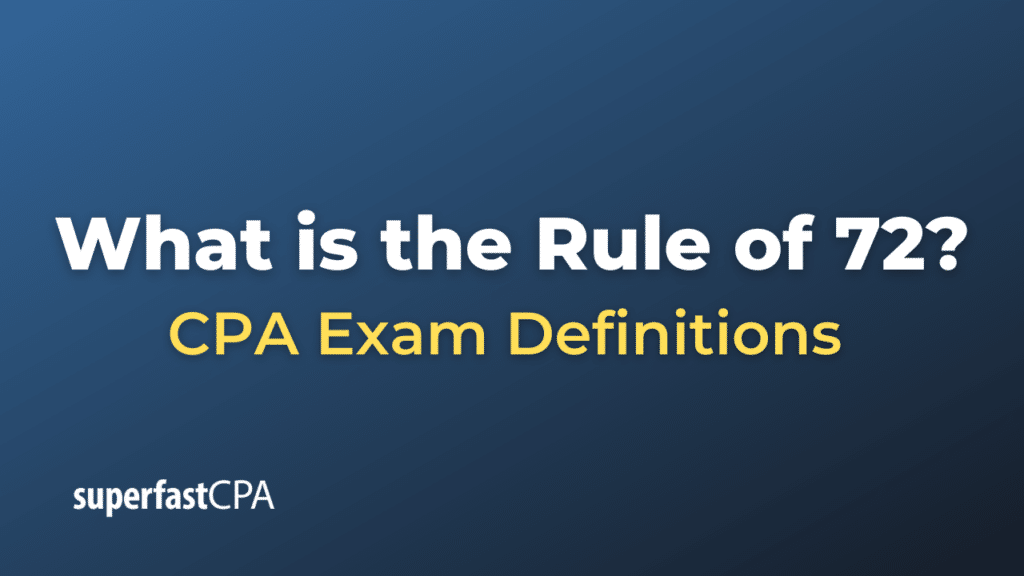Rule of 72
The Rule of 72 is a quick, simple formula used to estimate the number of years required to double the value of an investment at a fixed annual rate of return or compound interest. The rule provides a way to determine how long an investment will take to double, given a consistent interest rate or return.
The formula is:
Number of Years = 72 / Annual Rate of Return (as a percentage)
The Rule of 72 is especially useful because of its simplicity, allowing for quick mental calculations without the need for a calculator or more complicated formulas.
Example of the Rule of 72
Imagine that Emily has just started her career and decides to invest in a mutual fund that historically offers an average annual return of 9%.
Emily wants to understand approximately how long it will take for her initial investment to double in value using this annual return rate.
Using the Rule of 72:
To estimate the number of years required to double her money at a 9% annual return:
Years to Double = 72 / Annual Rate of Return
Years to Double = 72 / 9 = 8
According to the Rule of 72, Emily’s investment will roughly double in 8 years with an average annual return of 9%.
In this scenario, the Rule of 72 provides Emily with a straightforward way to estimate her investment’s growth over time. While the rule offers a close approximation, it’s essential for Emily to understand that actual investment performance can vary due to various factors. However, the Rule of 72 gives her a general idea, allowing her to make informed financial decisions based on her long-term goals.













